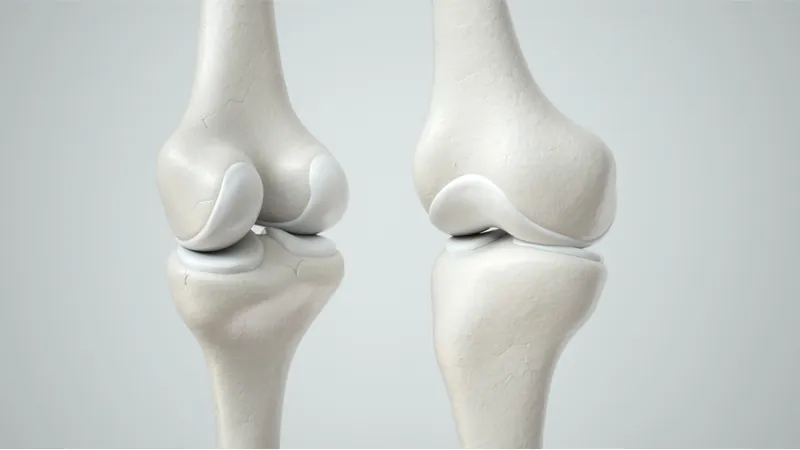Cartilage
Cartilage tissue is found in various places throughout the human body, including the ears, the nose, between the ribs, and the trachea. While trauma can compromise cartilage in each of these locations, most cartilage problems occur at the ends of our long bones. This cartilage, known as articular cartilage, acts as both a lubricant and shock absorber for our joints. The forces in our joints can be quite high, and without articular cartilage, our bones would rub together and wear down rapidly.
Cartilage is unique in that it is largely avascular and aneural, which means that it doesn’t contain blood vessels or neurons. Instead, it is optimized for its mechanical purpose. While this makes it great at protecting our bones, it also hinders its ability to repair itself. Our articular cartilage degenerates over a lifetime of wear and tear, especially in the knees and hips, which experience extremely high forces. Once a lesion develops, this degeneration can accelerate rapidly, eventually reaching the bone underneath, which can both be extremely painful and limit range of motion at that joint. This is referred to as osteoarthritis. Osteoarthritis is the leading cause of physical disability in the United States, and it is estimated that half of the population will develop it over their lifetimes.
The two factors that lead to the downfall of cartilage, extremely high forces and limited healing abilities, are the same things that make it difficult to treat. However, unlike other tissues whose function is highly complex (such as the liver), cartilage’s purely mechanical responsibilities have allowed us to treat it with synthetic materials in the form of joint replacements. Joint replacement surgeries are extremely invasive and require a lot of recovery and physical therapy, but, as most people who have had them can attest, the pain relief and return of joint function is dramatic. Unfortunately, the same forces that break down cartilage over the course of decades wear down the synthetic materials in joint replacements even more quickly. Joint replacement surgery is often put off as long as tolerable, at the expense of considerable pain and loss of mobility to the patient, because revision surgeries are incredibly difficult and often unsuccessful. As people live longer, one joint replacement, which typically lasts 10-20 years, no longer buys them enough time.

